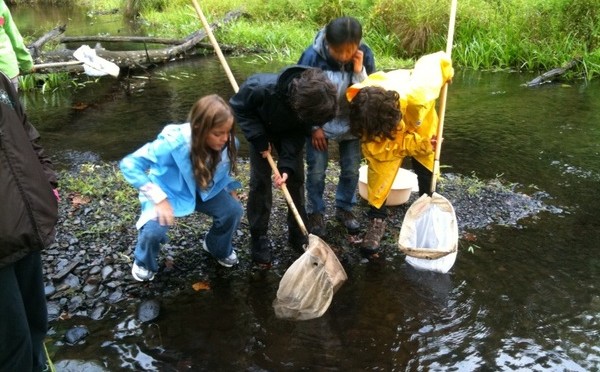I cannot think of a time in recent middle school history when I have been more impressed with our students. It is no small request to ask 160+ middle schoolers to sit on the floor in silence. They did this with commitment and an understanding of the significance of the moment. Students and teachers who were moved to speak did so in ways that told stories of personal experiences, raised questions about the nature of human understanding and action, and communicated simple and complex fears, hopes and dreams. These moments together confirmed the importance of our human community.
For many years, I have thought about using some of our regular middle school meeting time for this kind of meeting. I was hesitant and concerned that we were not ready as a community to take on this kind of collective engagement. I am not worried anymore and look forward to the next time that we spend some extended moments together in silence.
On a related concern-for-the community note, our seventh and eighth grade classes traveled to Union Square this week to view an interactive exhibit produced by the organization Doctors Without Borders that examined the issue of childhood malnutrition as part of their ongoing project “Starved for Attention.” As they suggest,
With the ongoing crisis in Somalia and throughout the Horn of Africa, there is no better time to examine the root causes and possible solutions to the outbreaks of malnutrition that claim the lives of more than three million children every year. The “Starved for Attention” exhibit recreates a Doctors Without Borders field hospital specializing in the treatment of malnourished children, just like those used by the organization in malnutrition “hotspots” such as India, Niger, and Somalia.
Our fifth and sixth grade classes will attend the exhibit next week. I’m sure that this experience will inspire our community to better consider how we can respond to this pressing issue.
Finally, for the past two days, fifth and sixth graders have (despite the rain) taken to the woods, ponds and craft shops at the Ashokan Center with joyful enthusiasm. This annual three-day trip provides students with an opportunity to build community while they explore the natural world and consider their place in it. The trip also provides numerous situations where students must not only work collaboratively in order to solve a variety of challenges, but must also look inward and examine their own individual capacity for understanding and action.
Throughout the three days, each student will likely confront moments of personal challenge as s/he ponders how to do something new or how to address something that s/he knows is difficult based on prior experience. In each of these situations, students will likely take advantage of the support of a friend or teacher who will help them to navigate through the risk at hand. It is this support and safety that helps students to explore the obvious and not so obvious opportunities for learning connected to their efforts. It also affords the safety that is necessary for students to take a step towards solitude and self-confrontation. As Parker Palmer observes in To Know As We Are Known:
Solitude calls us to confront ourselves with a directness impossible in everyday life, to learn who we really are and what we can rely on. . . . Community requires solitude to renew its bonds; solitude requires community to express and test these bonds. . . . Most of us in our daily lives exist neither in solitude nor in community, but somewhere in between. Seldom are we truly alone, and seldom are we truly in relationship to others. . . . Our lives alternate between collective busyness and individual isolation but rarely allow for an authentically solitary or corporate experience.
I’m inclined to believe that last Friday we achieved something authentic and that our fifth and sixth graders at Ashokan will experience a moment of solitude and community that will allow them to push beyond the obvious and seek unusual ideas, see other points of view, challenge assumptions, explore new territory and go beyond the boundaries.

